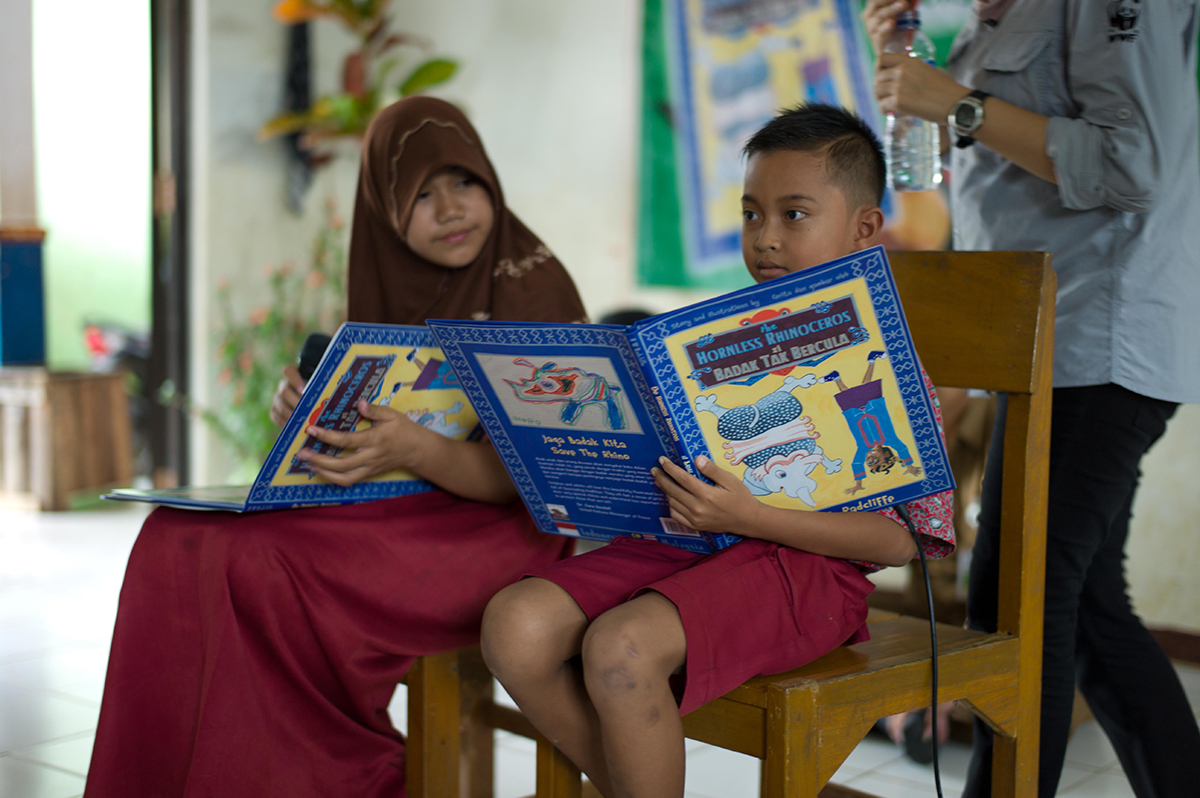Veterinarian educates Indonesian children about nearby rhinos
By Claudia Wheatley

A College of Veterinary Medicine faculty member wants to take the problem of rhinoceros poaching by the horns.
Using a children’s book, Dr. Robin Radcliffe has raised local awareness of two vanishing rhino species in Indonesia. Now he plans to use the same approach in Asian countries that import rhino horn, which commands sky-high prices as medicine, a party drug and an aphrodisiac.
Composed of keratin, as are hair and fingernails, rhino horn can’t deliver on any of these claims. However, it is a potent status symbol because until recently, only the affluent could afford it. Now that members of the growing middle class in “user” countries have the income for luxuries, demand for horn is growing – and poachers are trying to meet it.
“For the book program to make a lasting impact on the rhino horn trade, we will need to reach the people who are using it,” Radcliffe says.
Poaching is a serious and ongoing problem in Africa. It took a toll on Indonesia’s rhinos in the past, but is currently controlled by in that country by Rhino Protection Units that regularly patrol the forests. The primary problem now is deforestation from palm oil cultivation and logging, and time is running out: There are fewer than 100 Sumatran rhinos, and only about 50 Java rhinos.
Part of the problem is that Indonesians are generally unaware that they have native rhinos. When Radcliffe asked a class of 100 Indonesian children if they knew of the rhinos that lived just a few kilometers away from their school, “only two kids raised their hands, and both only knew of rhinos that lived in Africa,” he says. “We knew right then that we had to start at home, in Indonesia, to celebrate the rhinos of the rain forest and make them a part of Indonesian heritage.”
Reasoning that children share what they learn with their families, Radcliffe wrote and illustrated “The Hornless Rhinoceros,” the story of a young rhino and how he benefits his environment and the other animals. It also dispels the myth that rhino horn has medicinal qualities. Famed primatologist Jane Goodall, who has extended her mission to include other endangered species with an emphasis on reaching children, wrote the forward and a message.
Early in 2015, Radcliffe and his team began distributing 10,000 copies of the book, free of charge, to families and school children living close to two key rhino conservation areas. The team also visited the schools to make presentations on rhinoceros biology and the animals’ role in preserving the health of the rain forests.
All 10,000 copies will be distributed by the end of 2015, and as many as 30,000 Indonesians will have read the book or heard about it from their children. Students tested on basic rhino facts before and after reading the book showed an immediate increase in knowledge and understanding of the subject. The hope is that children in user countries will demonstrate a similar grasp of the topic and discuss the book – and its message – with their families.
Radcliffe is also partnering with Goodall and her team to provide undergraduate and professional students in Africa and Indonesia with training in conservation and health.
“Dr. Goodall and I share a vision of training the next generation to be better stewards for our planet, and ambassadors for animals from the rare rhinos to the great apes,” says Radcliffe. “It must be a part of every child’s, and every adult’s, education.”
Claudia Wheatley works for marketing and communications in the College of Veterinary Medicine.
Media Contact
Get Cornell news delivered right to your inbox.
Subscribe